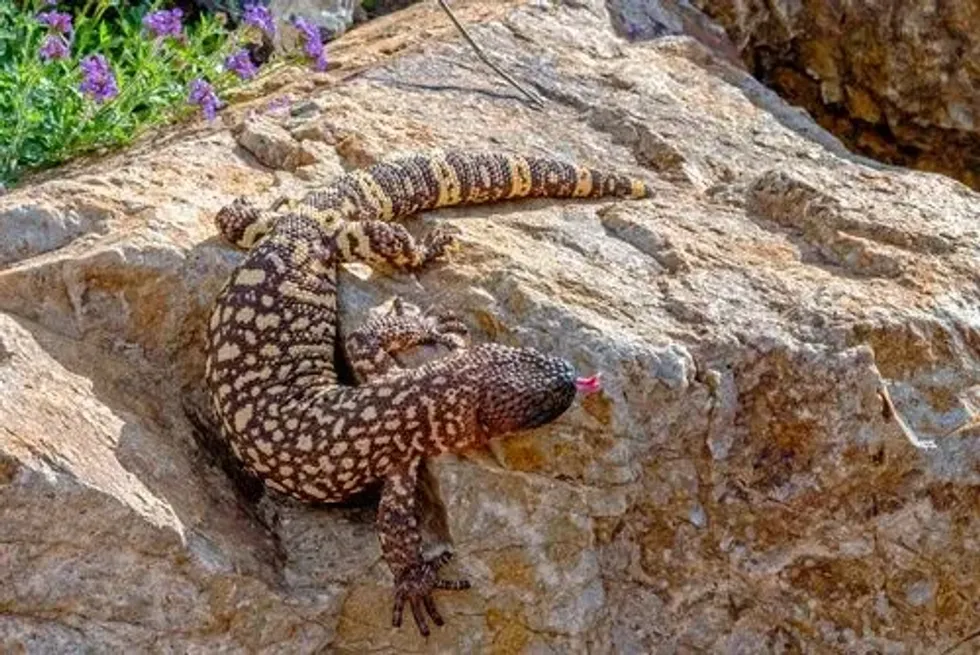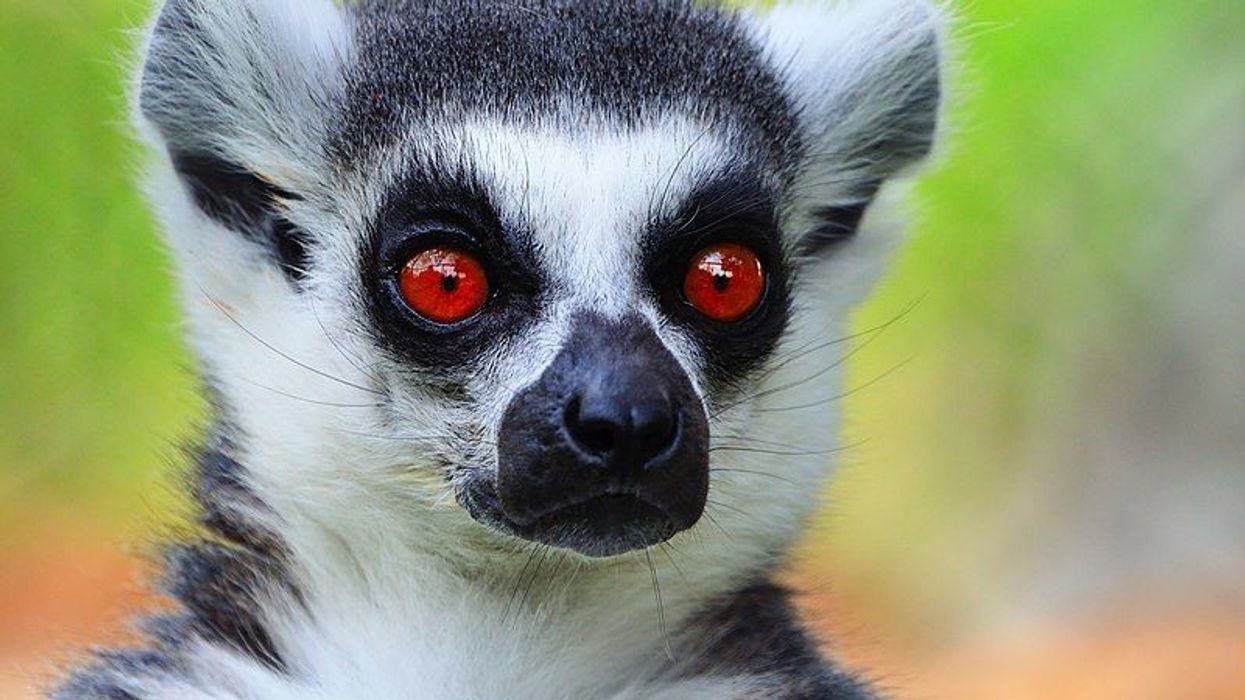The Mexican beaded lizard (Heloderma horridum) is a species of venomous lizards native to Mexico. It is one of two lizards in the genus Heloderma, the other being its more venomous relative, the Gila monster.
This species is named after its bumpy skin which has numerous bead-like scales on the surface. Though they are venomous, their venom is not fatal to humans. Mostly found in temperate forests and deserts, these beaded lizards follow a carnivorous diet and feed on small mammals, birds, insects, and eggs.
To find out more about these interesting animals, read on! For more relatable content, check out these Texas horned lizard facts and sand lizard facts for kids.
Mexican Beaded Lizard Interesting Facts
What type of animal is a Mexican beaded lizard?
The Mexican beaded lizard (Heloderma horridum) in the Heloderma genus is a species of venomous lizard native to Mexico.
What class of animal does a Mexican beaded lizard belong to?
The Mexican beaded lizard belongs to the class Reptilia.
How many Mexican beaded lizards are there in the world?
The exact population of beaded lizards is unknown. However, the Guatemalan beaded lizard, a subspecies of the Mexican beaded lizard, is one of the rarest lizards in the world with a population of fewer than 200 individuals.
Where does a Mexican beaded lizard live?
Mexican beaded lizards are native to Mexico and southern Guatemala and can be found mostly in the Pacific and Atlantic drainage areas, living in the surrounding forests. They spend most of their time in underground burrows and only come out at night.
What is a Mexican beaded lizard's habitat?
These lizards are mostly found in moist deciduous forests, pine-oak and thorn scrub forests, and in the desert. They are found at low levels, rarely exceeding elevations of 4,921 ft (1,500 m).
Who do Mexican beaded lizards live with?
These lizards hide together in burrows during the day, coming out to hunt at night. Lizards under the age of two years often stay together underground, gaining size and strength before they join the adults in the outside world.
How long does a Mexican beaded lizard live?
Mexican beaded lizards are quite long-lived animals, and are known to live for more than 30 years.
How do they reproduce?
The breeding season for these lizards takes place from September to October. Mexican beaded lizards mature around the age of six to eight years. Males engage in tedious, lengthy combat of which the victor mates with the female. After the mating process, the female lays around 2-30 eggs which hatch after an incubation period of 9-10 months.
What is their conservation status?
The conversation status of this species is Least Concern, except for the Guatemalan beaded lizard subspecies (Heloderma charlesbogerti), which is Critically Endangered with less than 200 individuals currently residing in the wild.
Mexican Beaded Lizard Fun Facts
What do Mexican beaded lizards look like?
Mexican beaded lizards are large, wide lizards with stumpy, thick tails. They are named after the small, beady scales present on their bodies which give them bumpy skin.
They are usually dark green or black with irregular yellow spots on their body. Their tails hold reserves of fat which they use to survive on when it is too cold outside to hunt. They have venom glands located in their lower jaws which secrete liquid every time they bite their prey.
They have pink, forked tongues which they use to collect smells, and then retract them into the top of their mouths which helps to identify them. Males and females look similar, with males being slightly larger.
How cute are they?
With their flat, stocky bodies and fat tails, these lizards are pretty cute. However one should not trust their appearance as they bite at even the slightest notion of danger with their bite being quite painful.
How do they communicate?
These lizards use hissing sounds in order to drive off predators. They use their tongues to gather and interpret scents by using a special organ located above their mouths.
How big is a Mexican beaded lizard?
Adult Mexican beaded lizards have been observed to measure between 22.4-35.8 in (57-91 cm), from snout to tail. They are nearly three to four times smaller than Komodo dragons.
How fast can a Mexican beaded lizard move?
These lizards are quite sedentary, only spending an hour above ground every night. They spend most of the winter in a hibernation-like state, living off of the fat stored in their tails. They appear sluggish most of the time, only quickening their pace when faced with the threat of predators.
How much does a Mexican beaded lizard weigh?
On average, these lizards are known to weigh between 1.8-4.4 lb (800-2,000 g). However, there have been reports of larger specimens weighing as much as 8.8 lb (4,000 g), though this is rare.
What are the male and female names of the species?
There are no separate names for the males and females of this species.
What would you call a baby Mexican beaded lizard?
Baby Mexican beaded lizards are called hatchlings or neonates.
What do they eat?
These lizards follow a carnivorous diet, hunting down animals such as small mammals, birds, insects, and other reptiles and killing them with their deadly bite. They also feed on the eggs of birds and other reptiles.
Are they poisonous?
The Mexican beaded lizard bite is quite potent, with the lizard biting deep into the victim's flesh and hanging on to inject its venom into the wound. It has venom glands located in its lower jaw which lead to the base of its teeth.
Its venom is not fatal to humans, however, it can cause severe swelling, excruciating pain, a drop in blood pressure, weakness, and excessive sweating. It can also cause respiratory failure in rare cases.
Would they make a good pet?
Due to the venomous nature of these animals, it is best not to attempt domesticating them. They will bite even at the slightest of prods or attempts to handle them.
This makes them not very good for beginners. They are very sluggish creatures and are not very active. It is best to observe these lizards from a distance and refrain from trying to handle them as it may result in a painful bite.
Did you know...
Mexican beaded lizard venom is being tested for the treatment of HIV, Alzheimer's, and diabetes.
These venomous lizards were once thought to be the only poisonous lizard in the world, however, this was refuted after the discovery of other venomous species such as the monitor lizard and the lace monitor lizard.
The Heloderma species, Gila monster, is currently the most venomous lizard in the world.
There is a lot of misconception and superstition around this lizard, causing natives to kill it on sight. It is also a common victim of illegal poaching, leading it to become a protected species under CITES.
Is the Mexican beaded lizard's bite dangerous?
This animal has venom glands located in its lower jaw which lead to the base of its teeth. They deliver their bite by chomping deep into the victim's flesh and injecting their venom into the wound in an attempt to paralyze them as prey.
What is the difference between a Mexican beaded lizard vs. Gila monster?
The Mexican beaded lizard and Gila monster are two species of the same genus, Heloderma. The two species are similar in appearance, with the beaded lizard being larger in size and duller in color.
the Gila monster has pinkish spots on its black skin, whereas the spots of the beaded lizard are yellower in color.
Gila monsters are also found further north than Mexican beaded lizards, being found only in Sonora and some parts of southwestern America. Gila monsters also mature earlier at four to five years of age, and lay fewer eggs, around six to eight, than their beaded lizard counterparts.
Here at Kidadl, we have carefully created lots of interesting family-friendly animal facts for everyone to discover! Learn more about some other reptiles from our frilled lizard interesting facts and water monitor surprising facts pages.
You can even occupy yourself at home by coloring in one of our free printable Mexican beaded lizard coloring pages.









